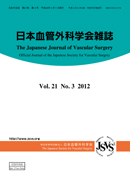Volume 18, Issue 2
Displaying 1-13 of 13 articles from this issue
- |<
- <
- 1
- >
- >|
-
2009Volume 18Issue 2 Pages 43-48
Published: February 25, 2009
Released on J-STAGE: May 12, 2009
Download PDF (575K)
-
2009Volume 18Issue 2 Pages 51
Published: April 14, 2009
Released on J-STAGE: May 12, 2009
Download PDF (174K)
-
2009Volume 18Issue 2 Pages 125
Published: April 14, 2009
Released on J-STAGE: May 12, 2009
Download PDF (147K) -
2009Volume 18Issue 2 Pages 126-127
Published: April 14, 2009
Released on J-STAGE: May 12, 2009
Download PDF (284K) -
2009Volume 18Issue 2 Pages 128-134
Published: April 14, 2009
Released on J-STAGE: May 12, 2009
Download PDF (92K) -
2009Volume 18Issue 2 Pages 135-139
Published: April 14, 2009
Released on J-STAGE: May 12, 2009
Download PDF (438K) -
2009Volume 18Issue 2 Pages 141-164
Published: April 14, 2009
Released on J-STAGE: May 12, 2009
Download PDF (252K) -
2009Volume 18Issue 2 Pages 165-181
Published: April 14, 2009
Released on J-STAGE: May 12, 2009
Download PDF (1961K) -
2009Volume 18Issue 2 Pages 182-200
Published: April 14, 2009
Released on J-STAGE: May 12, 2009
Download PDF (2106K) -
2009Volume 18Issue 2 Pages 201-218
Published: April 14, 2009
Released on J-STAGE: May 12, 2009
Download PDF (2068K) -
2009Volume 18Issue 2 Pages 219-256
Published: April 14, 2009
Released on J-STAGE: May 12, 2009
Download PDF (4443K) -
2009Volume 18Issue 2 Pages 257-296
Published: April 14, 2009
Released on J-STAGE: May 12, 2009
Download PDF (4680K) -
2009Volume 18Issue 2 Pages 297-411
Published: April 14, 2009
Released on J-STAGE: May 12, 2009
Download PDF (13966K)
- |<
- <
- 1
- >
- >|
